Regular use of pure cocoa serves two purposes: to help eliminate toxins from the body and to assist in the process of self-awareness.
Everyone has heard of the hallucinogenic effects of ayahuasca tea, which can cause changes in consciousness. Some religions, such as Santo Daime, use drinking in their services as a way of opening their minds and reaching a state of meditation. If you are over 50, you probably read one or more books by Carlos Castañeda, who became famous in the 70s, with “The devil’s herb”.

The title helped to popularize the South American shamanic tradition of using hallucinogenic plants, in this case, ayahuasca, to achieve different levels of perception of reality. Many years later, it was discovered that cocoa is a power plant, capable of modifying consciousness, increasing productivity, creativity and, still, it is a great ally in the fight against depression and in improving the quality of life in a general. And, unlike ayahuasca, those who take it do not lose consciousness or have the danger of going through a “bad trip” (although there is no contraindication, the recommendation is always to refer to a doctor and/or nutritionist).
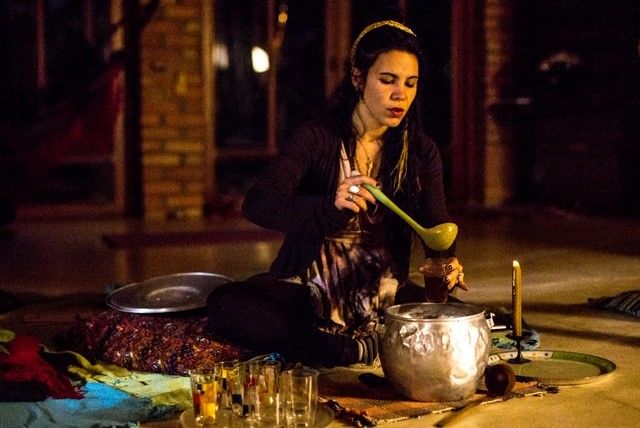
Cocoa, which originates in the Amazon rainforest (and not Central American as was thought until recently), had existed for seven thousand years in the upper Amazon basin. And, according to the results of carbon tests carried out by Ecuadorian and French researchers, its social use dates back to 5,500 years, and prove that cocoa was widely used in ceremonies carried out by the Mayo-Chinchipe-Marañon peoples.
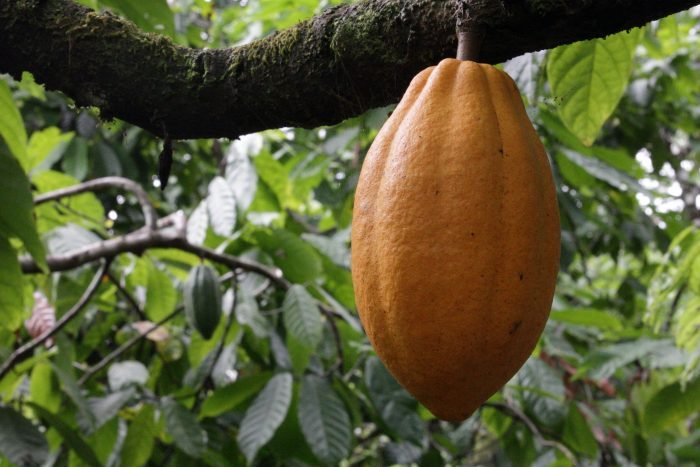
In Central America, there are data on the use of cocoa by the Olmeca culture, about three thousand years ago. Like them, the Mayans and Aztecs also used it for rituals and, reportedly, it was not a democratic drink: cocoa was intended only for kings and priests.
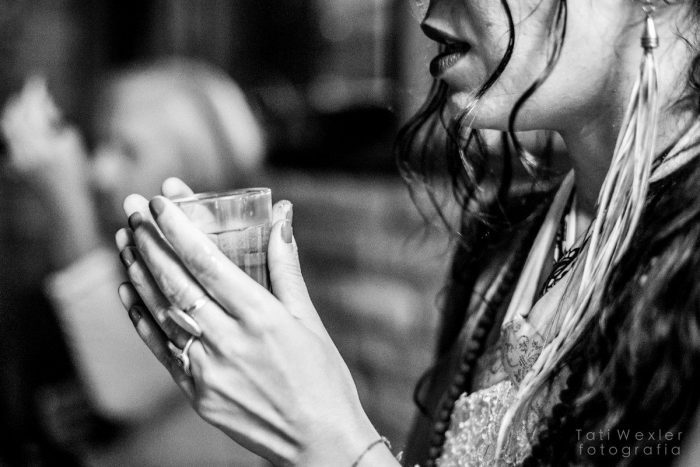
Currently, in addition to the production of chocolates, of course, cocoa has been used in alternative therapies as a driver for opening new channels of perception in alternative medicine or as a superfood, raised to this position by the American David Wolfe (www.davidwolfe.com).
Cocoa Medicine
One of the first people in our day to use cocoa in a ritualistic way was the American Keith’s Wilson (www.keithscacao.com), an American geologist and adventurer. Keith’s became a fan of alternative medicine between the 1980s and 1990s. In 2003, on a trip to Guatemala, according to him, he “discovered” the spirit of cocoa, IXCacao, the Mayan goddess of cocoa, responsible for abundance, compassion and fertility, who intuited him how to use the fruit for ritualistic ceremonies (read the IXCacao legend at the end of the story).
Referring to himself as the chocolate shaman, Keith’s started to help local production of Creole cocoa (the purest) grown in a totally natural way and says that he was conducted by the goddess IXCacao on how to prepare a drink that, thanks to its nutritional composition, helps to expand the caliber of blood vessels, relaxing the muscles. “The drink helps to relax all the muscles, mainly the heart, helping, in this way, to open the heart chakra, consequently, providing a feeling of relaxation throughout the body.
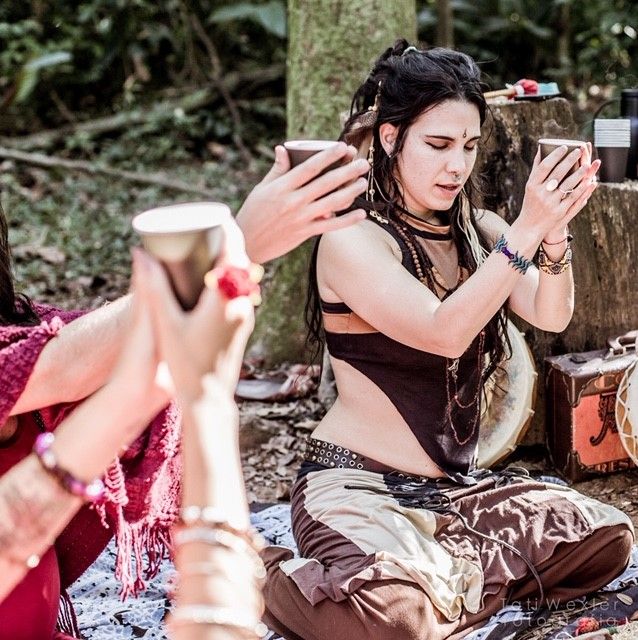
The heart chakra is the fourth from the bottom up and is located in the center of the chest. It is linked to Timo and represents our ability to love.
According to therapist Marília Lins, from Tribal Shakti, specialized in Initiation and Training in the Art of Sacred Cocoa, Theobromina, the active ingredient in cocoa has a calming effect, capable of increasing blood flow to the heart, which naturally activates the chakra cardiac. “The person becomes more creative, more compassionate, more loving. In that sense, cocoa is a potentializer,” she explains.
Marilia was a student of Keith’s in Guatemala and, since then, she has been working with cocoa in ritual ceremonies, at her home, in the Cotia region, in São Paulo. “Generally, the first time that people come into contact with cocoa is through face-to-face meetings (which are being held at a distance due to the pandemic), in the ceremonies where we consecrate cocoa. Each participant drinks about 45 grams of pure cocoa added to other herbs and spices and then, as a therapist, I help the person to notice some subtle changes that are occurring in their body. As cocoa is a powerful anti-oxidant, with a high index of flavonoids, it is possible to experience different sensations such as mild tachycardia, headache, drowsiness, among other symptoms,” she says.

Marília goes further: “this is because cocoa works as a food for the soul and, as such, helps to dissolve emotional hurts and traumas. “Our physical body has a memory and everything that happens to us is kept in the form of muscle contractions, tension, contraction, etc. From the moment the cocoa is absorbed, it relaxes all the muscles of the body, everything is softer. Cocoa is able to cut the connection of chronic pain, for example. This helps to access those emotions that are stored and allows us to look at traumas and reframe them”, explains.
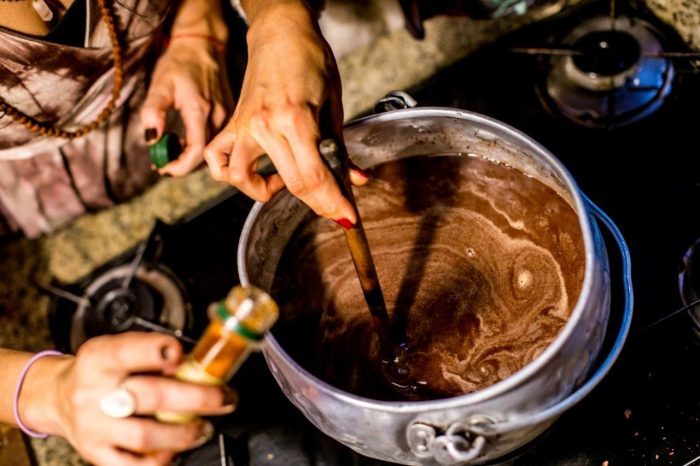
Cocoa is a precursor to kerotonin, endorphins and anandamide, a compound that our body manufactures, whose action is basically relaxing. It soothes and regulates the cardiovascular system, generating a feeling of happiness.
The ritual: what it is like
Her cocoa celebration ritual is based on the Mayan culture, whose people used dance as a form of openness and empowerment. At the beginning, each participant receives a dose of about 45 grams of a 100% cocoa drink plus water and some spices. “It usually takes effect in up to 10 minutes and, over that time, I guide the meditation until the participants start to notice the effects: a mild tachycardia, deeper breathing and a feeling of happiness. At that moment, a deep meditative state is entered”, she says.
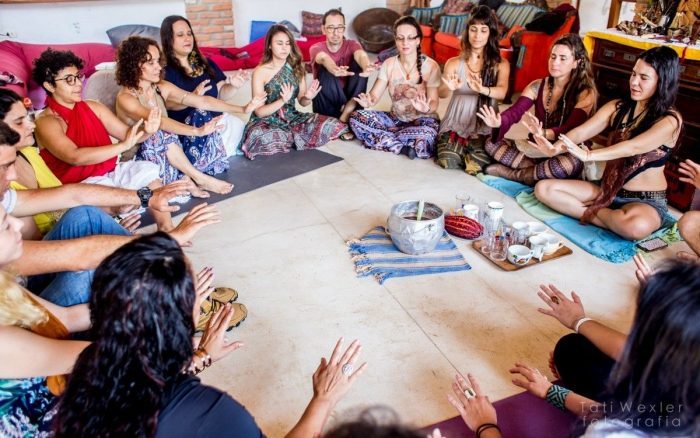
Still according to Marília, almost always, the first time that a person comes into contact with cocoa is in a consecration ritual. Most of the time, people start to incorporate it in their diet.
“My students regularly use cocoa, mainly to practice yoga, meditate, study, write and, each one develops a different relationship by incorporating cocoa into their daily lives. The only thing you can’t do is use cocoa powder, industrialized, or milk, which cancels the effects,” she warns. You have to melt the 100% cocoa bar, and preferably the criollo variety,” she concludes.
The IXCacao legend
The story of the Goddess of Chocolate is a long and complicated one. She was worshipped as a fertility goddess, with different names and different roles in the ancient cultures of Mesoamerica.
We take great liberties with her story, letting her keep one name and merging her myths as she moved from one culture to the next, all in the effort to make her story more accessible.
We will call her by her Mayan name, Ixcacao. (By the way, the suffix Ix- in a name makes it clear that it is the name of a female. It literally means “little one”. So her name translates into English as “Cocoa Woman”)
She featured in the creation myths of the Mayans, introducing agriculture to the people and helping insure the birth of the Sacred Twins. Initially, she was an earth goddess in a matriarchal society where tending the crops was woman’s work. Banishing hunger and providing for the safety and security of the people was her divine responsibility.
Though she seldom made a public appearance in the myths, Ixcacao, the Mayan Goddess of Chocolate, had been loved by the common folk as a compassionate goddess of abundance.
But that was soon to change!
The patriarchy had begun. At first it was a golden age. Kings and dynasties appeared. A ruling class was born.
Astronomy flourished, as did the arts. Writing (glyphs) began to appear on the magnificent monuments, palaces, and temples of the kings and many of the nobility. Large cities were established and populated with wealthy people.
Serving The Patriarchy
Then the poor Goddess of Chocolate was whisked away from the fields to marry the God of Commerce, whether she wanted it or not. Soon her lovely cocoa beans were very valuable and had been turned into currency!
Even worse, chocolate was now declared the ‘food of the gods’, available only to the rulers and the warriors in their service. She heard rumors that there was even widespread starvation.
The goddess Ixcacao missed the fields, she missed being beside her people but, most of all, her heart was broken that human sacrifice was now the practice and the children from the fields were dying in order to assuage the thirst of the Sun and prevent a cataclysmic drought.
And so the Goddess of Chocolate climbed the steps beside them as they ascended to meet their executioner. She offered them comforting goblets of cocoa along the way. Thus she became an important part of the sacred rites each year.
Soon the aristocrats began to regard labor of any sort as beneath their dignity and lived in their fine palaces oblivious to the human suffering on which their lifestyles depended.
Two Goddesses Cook Up a Plan
The Goddess of Love was not amused. No longer did the people laugh, sing or dance. Who had the energy for love anymore? Conspiring with the Goddess of Love, the Goddess of Chocolate taught the kings’ cooks how to ferment the wine and make it intoxicating. And she would ‘let it slip’ that it was a powerful aphrodisiac.
A period of unbridled gluttony and warfare between the various states was soon to follow. The Emperor Montezuma was even reported to drink 40-50 goblets a day, soaking up the aphrodisiacal stimulant of the cocoa to sustain his energy for his daily visits to his harem.
Just as the Grandmother foresaw, no one with authority was paying attention to the rumblings of the earth. Too many people, too little land available for horticulture, and what land there was couldn’t produce food because either half the workers were off to war or the land itself was being used as battlefields.
Mighty kingdoms fell. The people were malnourished and starving.
The Return of the Goddess
Grateful for the role that Ixcacao had played in reminding the people that there was much more to life than just working for the “masters”, the Goddess of Love showered her with great favor, adorning her from head to foot with delicate flower blossoms that fluttered in the gentle winds.
And so, covered in beauty, Ixcacao, the Goddess of Chocolate was allowed to return to her people, this time as both the fertility goddess who stood watch over the fields of corn and saw that her people were fed, but also as a queen of love and pleasure.
No more work without rest.
No more work without time for family and friends.
No more work without time for music and dance.
And above all . . .
No more work without love.
Meanings of the Myths of the Goddess of Chocolate
Ixcacao’s wisdom is a lovely counterpoint to the production-oriented hustle of our modern world, its frantic buying and selling for profit, and its greed.
The Goddess of Chocolate reminds us that a luxurious world unfolds before your eyes if you take a moment to still your “busy-ness” and take the time to rejoice in those things which give you pleasure.
Watch the video from the Cacau Lab/Ceremonial staff, who kindly authorized its reproduction on our website:
Music to rock your ceremony:
Photos: Tati Wexler credits



